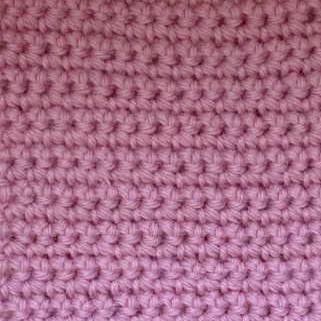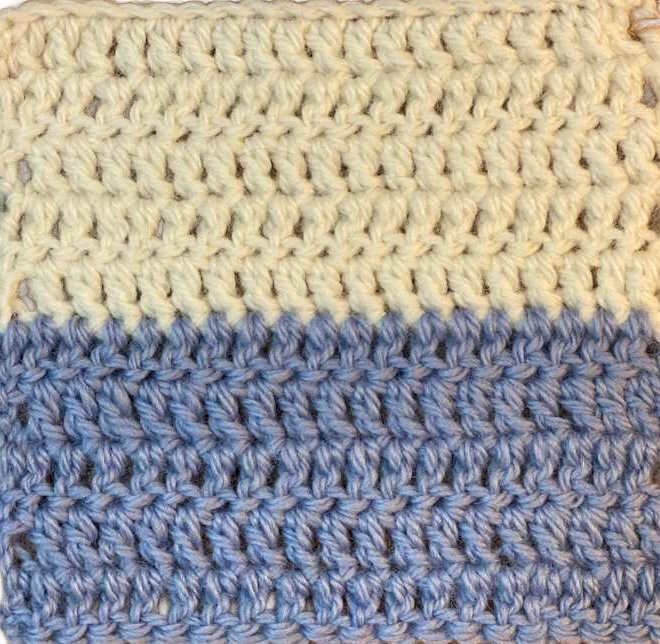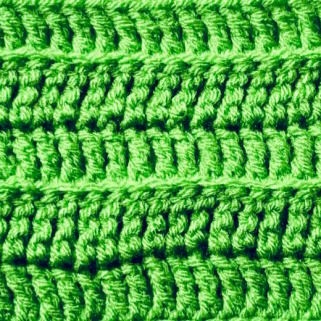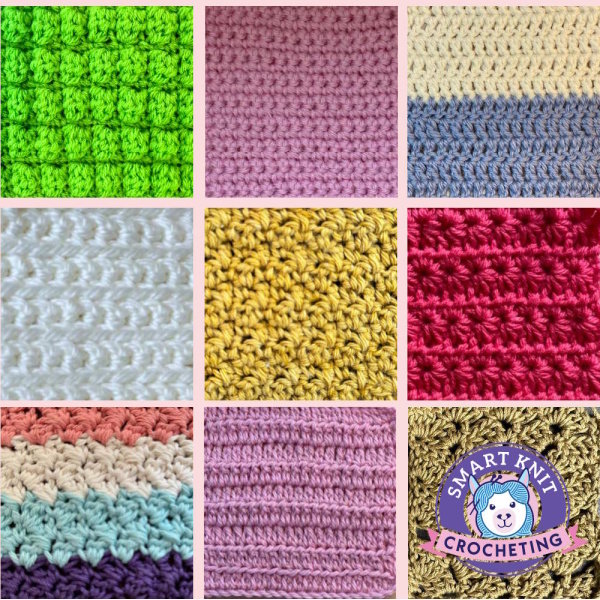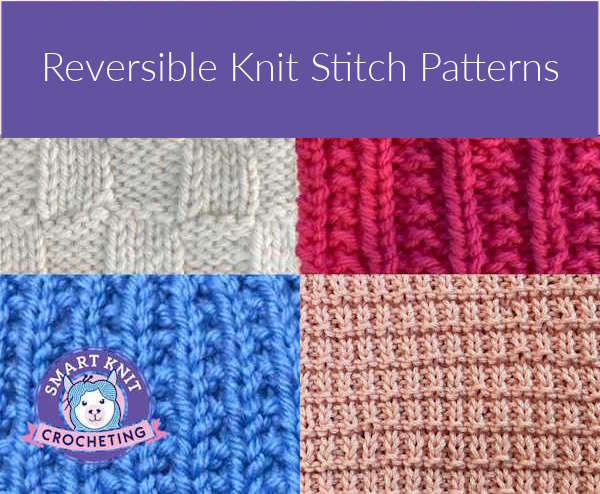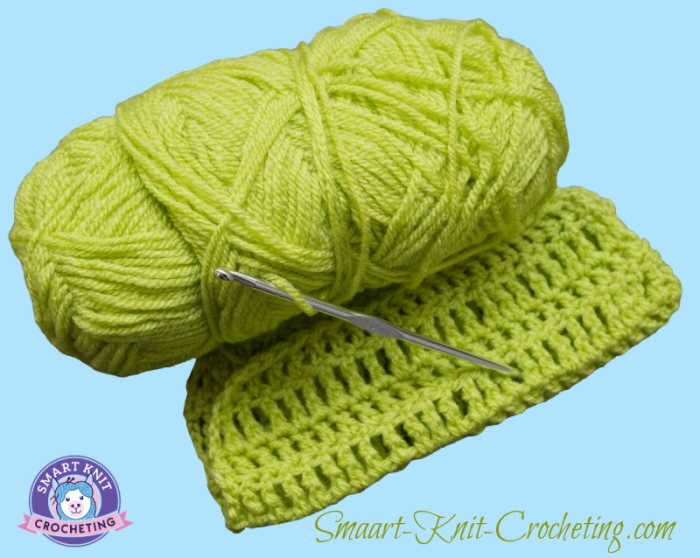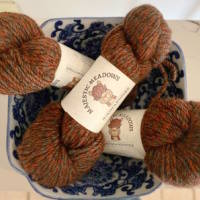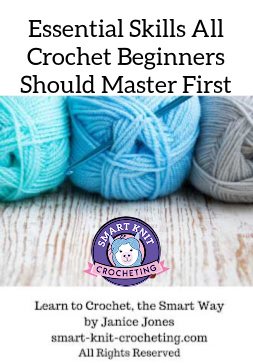- Home
- Crochet Stitches
- Half Double Crochet
Half Double Crochet (HDC):
Step-by-Step Tutorial for Beginners
by Janice Jones |Last updated December 31, 2025
The half-double crochet stitch is easy for any beginner to master and produces a fabric with a beautiful texture. It is a gorgeous stitch and my personal favorite stitch that is half the size (height) between the single and the double crochet stitches, hence its name.
This crochet tutorial will teach you one of the most common crochet stitches. I will walk you through the steps of making the half-double crochet stitch. At the end of this step-by-step tutorial, you'll have a new project to make as you practice your skills.
You will need to know how to make a slip stitch and a chain of stitches.
The abbreviation is hdc.
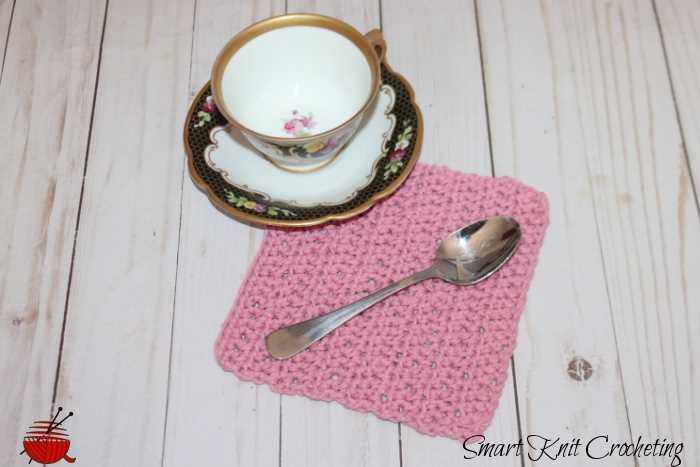 The Half Double Crochet Stitch
The Half Double Crochet StitchWhat Is a Half Double Crochet Stitch?
The half double crochet stitch (abbreviated hdc) is a basic crochet stitch that falls in height between a single crochet and a double crochet.
It is made by yarning over once, inserting the hook into the stitch, and pulling through all three loops on the hook in one step.
The result is a fabric that is slightly taller than single crochet, but denser than double crochet.
UK vs. US Terminology
In the UK, the same stitch is called the half treble crochet, abbreviated htr.
The Half Treble (Htr) and the Half Double Crochet (Hdc) are the same stitch, just labeled differently.
As you become more familiar with crochet, you will find several differences between uk terms and us terms.
Stitch Anatomy of the Half Double Crochet
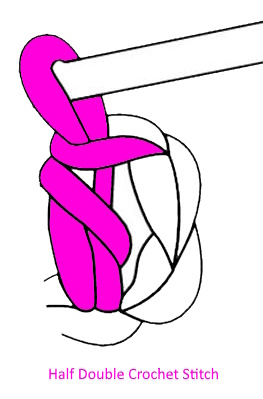
Understanding the anatomy of the half double crochet stitch makes it much easier to count stitches, insert your hook correctly, and troubleshoot mistakes.
A completed half double crochet stitch has three main parts:
-
Top Two Loops (the “V”)
These are the two loops at the very top of the stitch. Most half-double crochet stitches are worked under both loops, unless a pattern specifies otherwise. -
Third Loop (Yarn Over Bar)
The half-double crochet has a unique third loop, created by the initial yarn over. This loop sits just below the top “V” on the back of the fabric and can be used to create extra texture or ribbing. -
Post
The post is the vertical body of the stitch that gives the fabric its height and structure. When counting rows, you’ll often count these vertical posts.
Knowing where each part is located helps you follow patterns accurately and understand variations, such as hdc, through the front loop, back loop, or third loop only.
Top Two Loops Look Like Little Vs
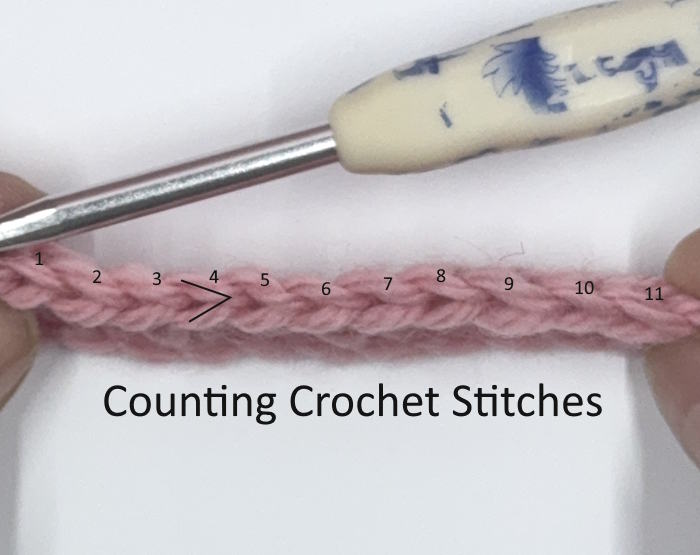
Third Loop Seen on the Wrong Side of the Fabric
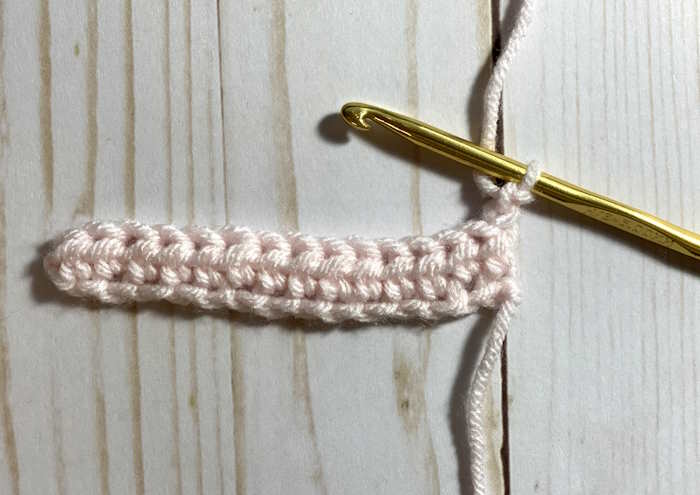
Post
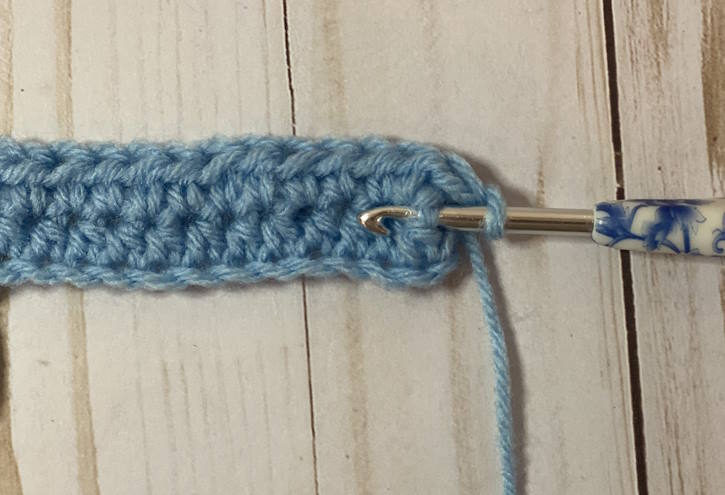
What Can You Do With the Half Double Crochet Stitch?
If you need to make a tight fabric with stitches a bit taller than a single crochet stitch, the half-double crochet is a great choice. You will see patterns that work in rows and those that call for crocheting in the round. (Making circles or spirals.)
You’ll recognize the half-double crochet stitch in baby blankets or other blanket patterns, for that matter. It also shows up in pillow coverings, washcloths or dishcloths, placemats, and amigurumi projects, to mention just a few.
Chart Symbol for the Half Double Crochet
If you are learning to use crochet symbols in addition to abbreviations, a list can be found at the Craft Yarn Council. It looks like a large T or capital T.
 The symbol for a half double crochet looks like the capital T
The symbol for a half double crochet looks like the capital TWhat is the difference between the half double crochet, the single crochet stitch, the double crochet stitch, and the treble stitch?
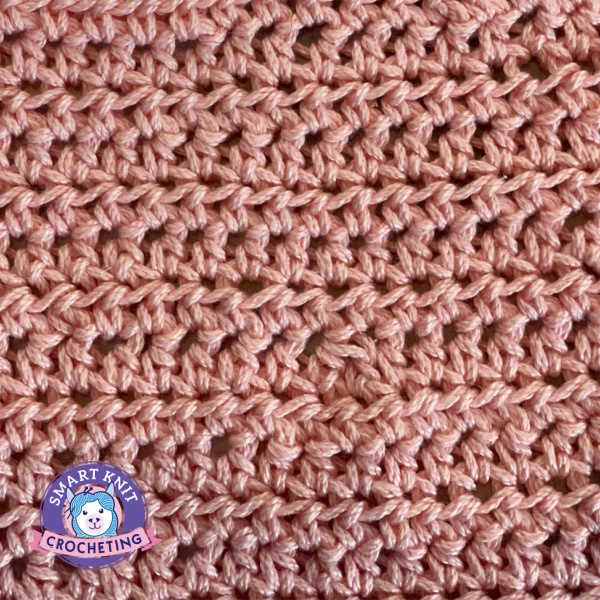 Half Double Crochet
Half Double CrochetAll of these stitches differ in height, with the single crochet being the shortest stitch and the treble stitch being the tallest.
In my opinion, each stitch adds an extra step. But each uses similar techniques.
Are You Ready to Make the Half Double Crochet Stitch?
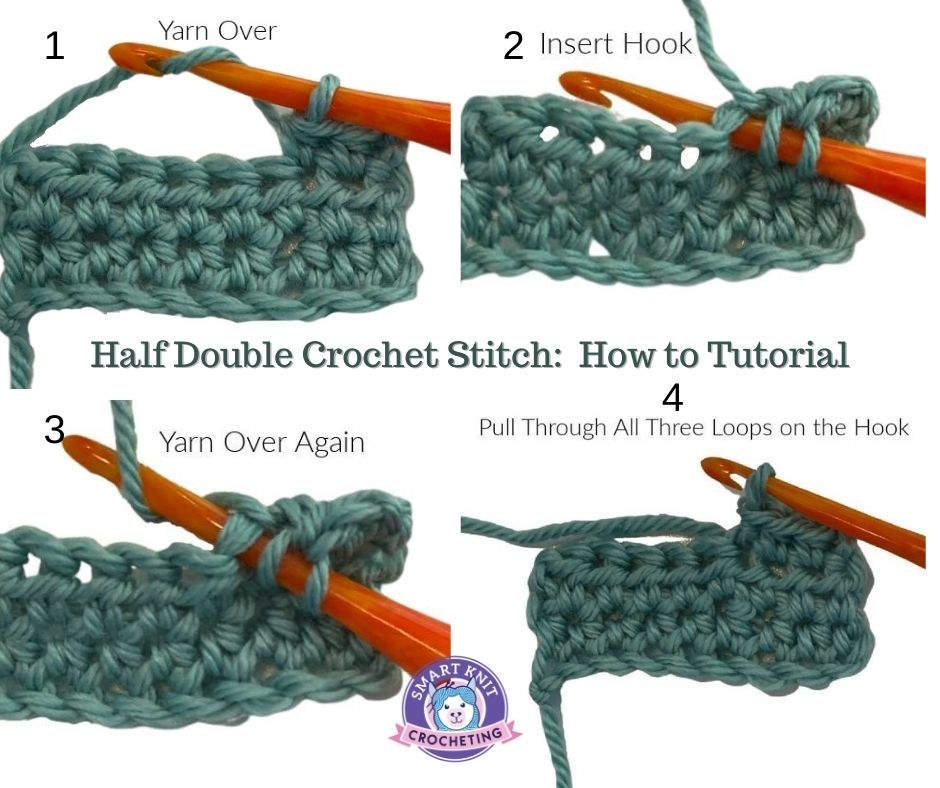
Let’s do a little swatch for practice. Or, if you prefer, practice this stitch by making a washcloth.
Materials Needed
- Worsted Weight Yarn (Number 4)
- Size F Crochet Hook or 3.75 mm crochet hook
- Scissors
- Yarn Needle
The hook size is unimportant, but you should match the hook to the yarn you use.
You can make this practice swatch using acrylic or wool, but if you want to keep it and actually use it as a washcloth, start with 100% cotton.
Learn the hdc by Making a Washcloth
I used Lily Sugar’n Cream worsted weight (Number 4) 100% cotton for this project.
If this is your first time using cotton, you might find the feel a little different and more challenging to work with. If so, try going up one hook size.
I've chosen to use a number US F or 3.75 mm hook. I recommend selecting a light-colored yarn to make your stitches easier to see.
I will start with a slip knot and make 32 chain stitches. The half-double crochet stitches will be worked into this row of chain stitches.
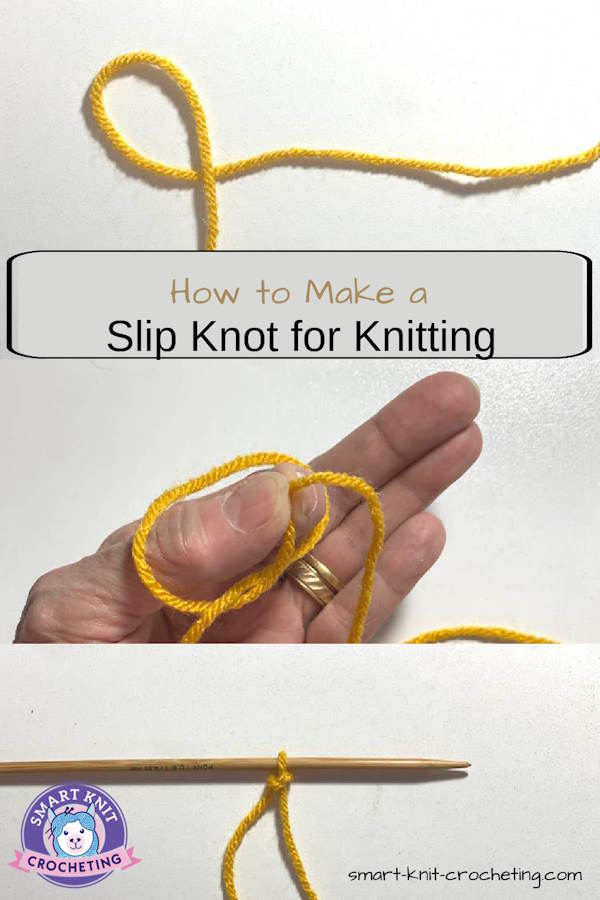
The last two chain stitches represent the turning chain. Turn.
The first stitch will be worked into the third chain from the hook.
First Row of Half Double Crochet
Wrap your yarn around your hook from the back over to the front (“yarn over”)
Insert your hook into the 3rd chain from your hook
Pull through, and you should be able to count three loops on the hook.
Yarn over again and pull through all three loops.
You just completed one half-double crochet stitch.
Repeat by working one half double crochet in the next chain stitch until you reach the end of the row. You do not work into the slip stitch at the end.
You should now have 31 half-double crochet stitches made. Count each stitch or count the V's at the top to be sure you have 31 stitches.
Congratulations, you’ve actually worked the hardest row of the project. The next row will be easier. As a note, we will work into the top two loops of each half-double crochet stitch for this tutorial.
Second Row
Chain two and turn your work. This is the beginning of row 2. You should have 31 stitches in your first row.
Count them to be sure you have made the correct number. Please note that some crochet patterns will count the turning chain as a stitch, while others will not.
The pattern should indicate whether the turning chain is a stitch or not. For the purposes of this tutorial, we'll assume that the turning chain does count as the first stitch.
2. Insert your hook into the top two loops of the second stitch.
3. Yarn over and pull through. Three loops on your hook.
4. Yarn over and pull through all three loops.
5. Continue doing this in each stitch across the row
6. Again, as a side note, the last half double crochet stitch at the end of row two is worked in the top chain of your chain 2 turning chain.
Third and Subsequent Rows
Repeat row two until you have practiced several rows and feel comfortable with the half-double crochet. If you are making the dishcloth or washcloth, continue making rows until your piece measures approximately 7.5 inches or as long as you desire.
Cut the yarn leaving about a six-inch tail. Pull the yarn through the loop to create a knot.
The final step is to weave in the ends.
Counting Half Double Crochet Stitches and Rows
It’s a good idea to get into the habit of counting stitches and rows, and the best part is that counting half double crochet stitches is just like counting any other stitch. There are two ways to count:
- Counting the top “V’s
- Counting the posts
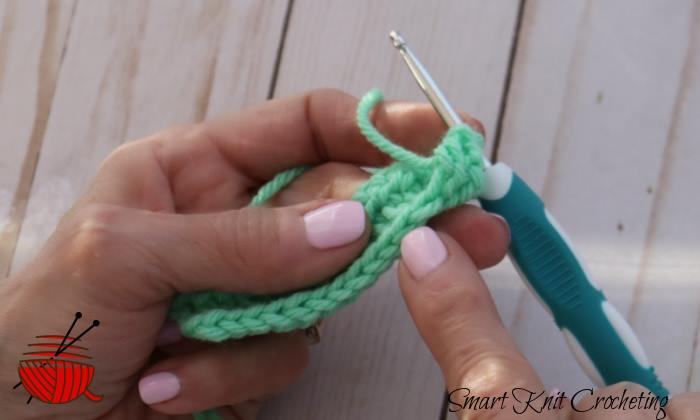 Count the little "V's"
Count the little "V's"Common Problems Associated with the Half-Double Crochet Stitch
The biggest problem that I hear is that the edges are not even.
This is a common problem for beginners making all the basic stitches. This can happen if you accidentally add an extra stitch at the beginning of the row or leave out the last stitch at the end of the row. Go back and count. That sounds boring, and you didn't start this hobby to learn pre-K math.
Different Ways to Make the Half-Double Crochet
There is more than one way to make this stitch; your pattern will tell you which method to use. Until now, we have been making the stitch by placing the hook under the “V “ and picking up both loops.
But the same stitch can be created by picking up only the front loop or by picking up only the back post. Here are the directions for making each one.
Abbreviations Used
Here are a couple abbreviations you might encounter for the next two stitches:
YO= Yarn over
Lp or Lps = Loops
St = stitch
Tfl = through the front loop
tbl = through the back loop
The front loop of a crochet stitch is the one closest to you, whereas the back loop is the farthest away from you.
Instructions for Making the Half Double Crochet Stitch Through the Front Loop Only
1. Yarn over and insert the hook under the front loop.
2. Yarn over and draw up a loop (3 loops on hook).
3. Yarn over and pull through all three loops.
Note: When doing any form of half-double crochet, if you start with a foundation chain of a certain number of chain stitches, you will end up with one less hdc stitch. So if you work a foundation chain of 22 chain stitches, after finishing the first row, you will end up with 21 hdc.
Half Double Crochet Through Back Loop Only (hdc tbl)
- Yarn over and insert hook under the back loop of the next stitch
- Yarn over and pull up a loop (3 loops on hook)
- Yarn over and pull through all three loops.
Troubleshooting hdc tfl and hdc tbl
Awkward Feeling
At first both techniques may seem awkward at first, but it gets easier as you practice. My best advice is to turn your fabric so that the little “v’s” face you and carefully place your hook into either the front or the back loop, depending on which you are working.
Splitting Yarn
Sometimes I’ve found that the yarn may split more easily when going into either the front or the back of the loop. If this happens to you, you can use a yarn needle to carefully pull up on the loop gently before you insert your hook. This temporary measure will certainly slow down your progress, but after a few rows, you’ll begin to get the feel for it.
Accidentally pulling up both loops of the V
Did you accidentally pull up both loops of the “V” when working the row? I mention this because it is so easy, and I’ll be the first to admit that I kept doing this when I first learned the stitch.
You will immediately know something is wrong when the swatch you are working on does not have those smooth ridge lines but appears as though they are broken. It’s best to go back and rip out the stitches you made up to that point and then rework them.
Ever Heard of Frogging?
What I just asked you to do (rip out the stitches) is often called frogging. It’s slang, but it makes sense when you know its background. To frog means to rip out stitches. Remember our little amphibians, the frog, and the sounds they make…ribbit ribbit. Well, you get the idea.
Increasing and Decreasing While Working the Half Double Crochet Stitch
How to Increase the Half Double Crochet Stitch
Increasing is very easy; you only need to work two half-double crochet stitches in the same space, whether it's a chain stitch or the stitch from the previous row.
How to Decrease the Half Double Crochet Stitch
The half double crochet decrease requires a couple more steps but is not difficult. You may see the half-double crochet decrease abbreviated as hdc2tog (half-double crochet two together) or simply HDC Dec.
- Yarn over and insert the hook into the first stitch.
- Yarn over and pull up a loop. There will be three loops on your hook.
- Insert your hook into the next stitch
- Yarn over and pull up a loop. There should be 4 loops on your hook. Yarn over and pull through all four loops.
Wrapping it Up
The half-double crochet stitch is well worth learning for a beginner, as you will encounter the stitch in many different projects. Better still, you may decide to make your own projects using this stitch.
Remember the washcloth tutorial above. If you didn’t make one while learning this stitch, why not return and give it a go? Even if you make mistakes, your finished project will still function quite well as a dish or washcloth
Pin for Future Reference
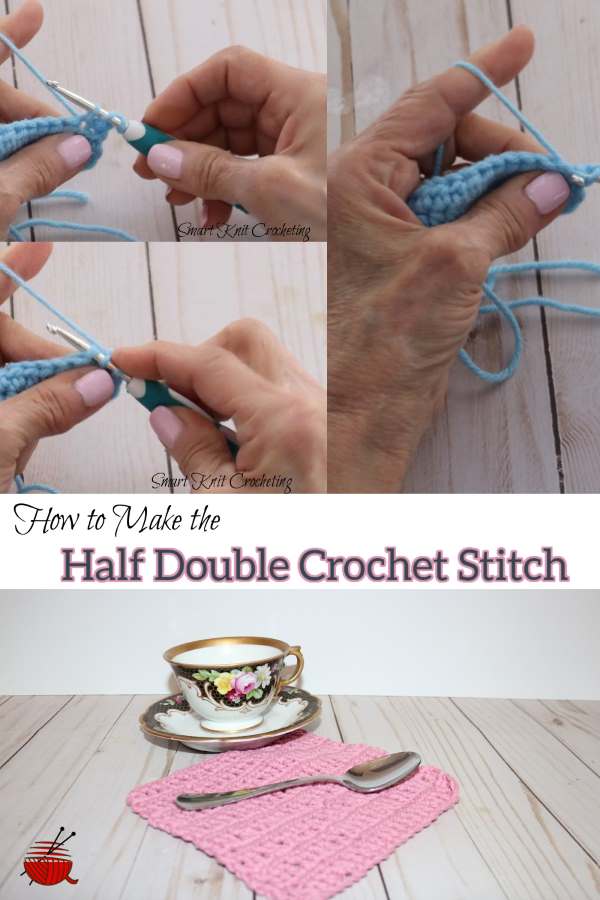 Half Double Crochet Stitch Pin
Half Double Crochet Stitch Pin